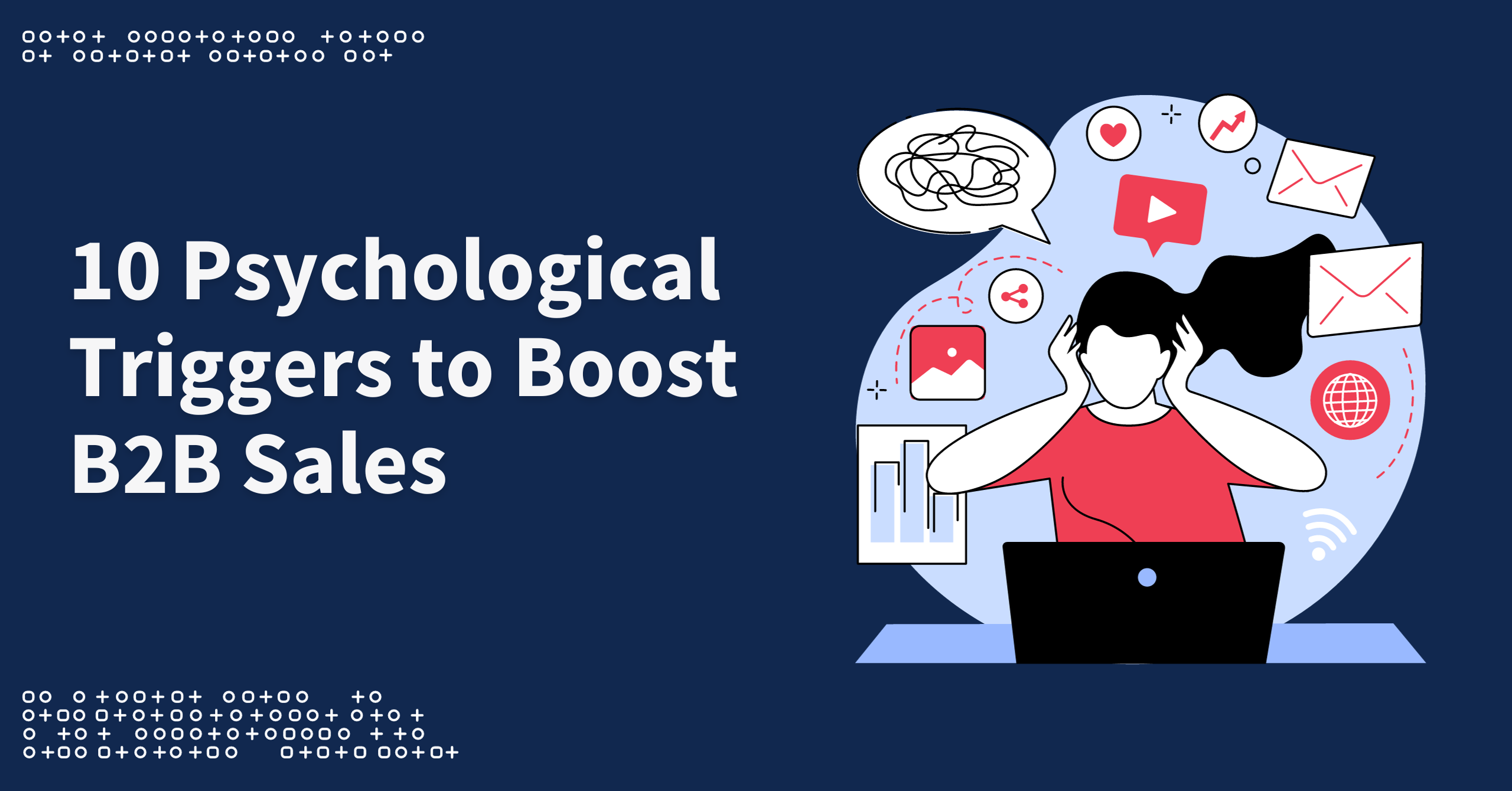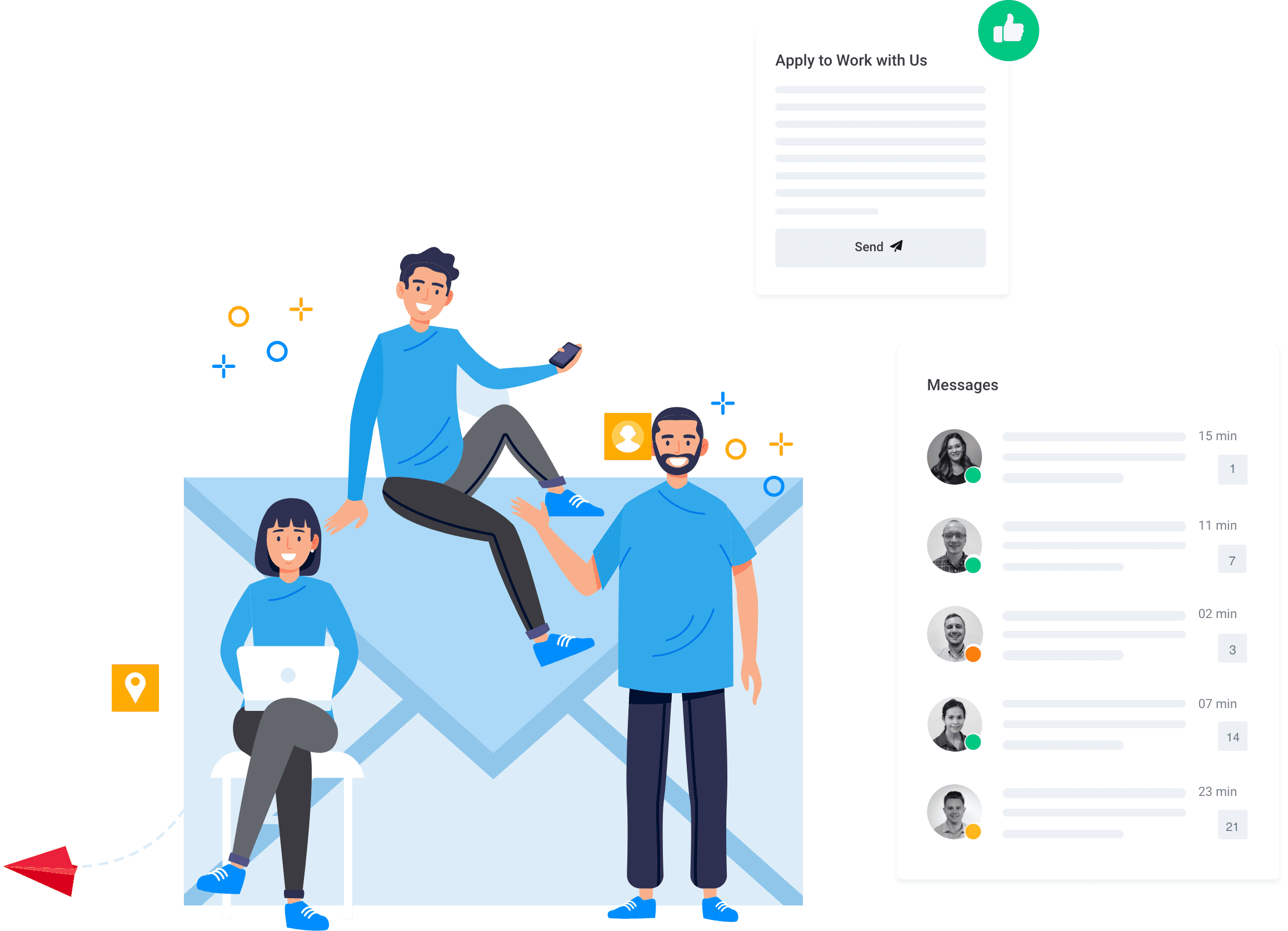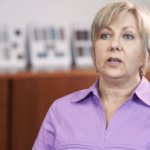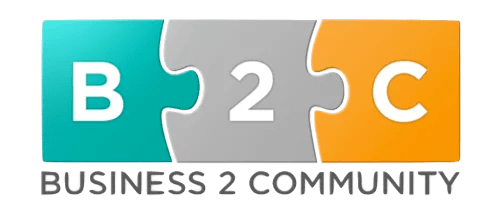When Albert Einstein said that “Insanity is doing the same thing over and over and expecting different results,” he (probably) wasn’t talking about business-to-business (B2B) sales.
But the point stands: If you are performing the same actions and relying on the same strategies time and time again, don’t be surprised if you get the same mediocre results. It’s time to start employing new tactics and tools—such as psychological triggers—that can help you boost sales, drive growth, and increase revenue for your B2B business.
The Importance of Psychology in B2B Sales
How can you influence or persuade buyers to make a purchase if you don’t understand them?
Knowing your ideal customers, from how their minds work to what influences their purchasing decisions, is essential to successful B2B sales and marketing strategies. If you take the time to know your audience, you can use those insights to refine strategies, craft messaging, and encourage them to take a desired action.
That’s why psychology is important in B2B marketing sales: It’s a valuable way experienced marketers and salespeople can persuade leads or prospects to make specific choices.
How Emotional Triggers Can Influence Buying Behavior
B2B purchasing decisions are guided, in part, by logic and reasoning. Prospects will evaluate your products or services to see if they address their pain points, fulfill their needs, and meet their expectations.
At the same time, prospects are people—and like all people, they are driven in part by emotions, both conscious and subconscious. Emotions play a significant part in the decision-making process; while logic and reasoning may narrow down their choices, it’s emotion that will influence their final purchasing decision.
Certain psychological triggers and cognitive biases can influence the types of emotions people feel as well as the actions they take. Using these psychological principles to your advantage can be an effective way to develop successful B2B marketing campaigns and sales strategies and to encourage customers to complete a particular action.
In other words, by employing the right psychological triggers, you can encourage potential buyers to become customers.
10 Psychological Triggers to Boost Sales & Drive Growth
If you can successfully employ these psychological triggers, you can develop a sense of loyalty and commitment among your buyers, leading to more sales and deeper relationships with customers. However, remember to keep in mind that authenticity is key. Today’s buyers have a keen eye for inauthenticity, so focus on genuine, trustworthy approaches to boosting sales and driving growth.
Psychological triggers—anything that encourages someone to take a specific action—can take many forms. Start with these proven tactics to drive conversions and purchasing decisions across your target market.
1. Start with a Positive First Impression
In psychology, the halo effect is all about positive first impressions: When we perceive a specific trait of a person, product, service, or brand, we have the tendency to let that perception influence our feelings about them in other, even unrelated, ways. That’s why creating a positive, memorable first impression is critically important—because it lasts.
Put your best foot forward by investing in a well-designed, visually appealing, thoughtful, tailored first impression, whether it is made through social media, email, or your website. Then, with a positive impression cemented in the minds of your prospects, they will be more likely to continue viewing your brand in a good light.
2. Create a Feeling of Reciprocity
The reciprocity principle in social psychology indicates that when someone gives us something, we are often compelled to give something back in return. This behavior is activated in many social situations, even among strangers, which makes it an important tool for B2B marketers and sales professionals.
B2B reciprocity can take many forms, such as providing free tools or checklists that help solve a problem, creating exclusive and valuable content for prospects, offering gifts or event tickets, or building tailored industry or competitor reports. The higher the perceived value of the “gifts” you give to prospects, the more likely they are willing to reciprocate by making a purchase.
Practicing reciprocity, especially as part of an account-based marketing strategy, can deepen relationships with customers, drive interest in your brand, increase engagement, and encourage organic word-of-mouth advertisement.
3. Put the Important Stuff at the Beginning & End
People have a tendency to remember information at the beginning or end of a series but have trouble recalling the middle items. This impulse is called the serial position effect and is another psychological trigger B2B sales and marketing professionals can use to influence purchasing habits.
By placing the most important information at the beginning and end of a sequence, you can determine which items your prospects are more likely to recall. For example, when creating compelling content for each stage of the buyer’s journey, highlight key points at the beginning and include a clear call to action (CTA) at the end that encourages prospects to engage with your brand.
4. Leverage Social Proof
From a psychological standpoint, the principle of social proof is described as the tendency for people to adopt certain behaviors or like something just because others do—whether they know them or not. Also known as the bandwagon effect, it is based on the idea that humans are social creatures who want to be accepted and liked; when others are doing something, we want to be part of the group.
Customers base their purchasing decisions on other people’s buying experiences. Leveraging social proof in the form of case studies, customer reviews, and product ratings is one way to create a sense of urgency and encourage people to jump on the bandwagon. You can, for example, add case studies to your website, invite happy customers to leave positive reviews, and offer options for prospects to sort products by ratings—all of which take advantage of the power of social proof.
5. Influence Emotions with Color Theory
According to color psychology, colors can directly influence the emotions your prospects feel and even the actions they take. In fact, HubSpot estimates that colors can impact 85% of customers’ purchasing decisions. Different colors, shades, and tones are associated with different moods that then have the ability to persuade buying behavior.
While personal preference and culture affect color psychology, common associations include red and energy or passion, blue and trust or confidence, and yellow and optimism or joy.
Color theory is a great way to guide the choices your customers make.
6. Find a Common Enemy
“The enemy of my enemy is my friend.” This ancient proverb does the trick here, too.
If you find a common enemy with your prospects, you can create a sense of unity and togetherness that not only deepens your relationship but also solidifies your place as an ally in the minds of your target audience.
Of course, in this case, the “enemy” is (likely) not a person—instead, it could be a product, a pain point, a problem, a concept, or even a competitor. For example, if your ideal customers are looking for ways to stop wasting time on repetitive, tedious tasks, and your B2B company sells automation software, you are both united against the enemy of wasted time. Use that language in your messaging to show prospects that you are fighting this fight together.
7. Invest in Influencer Marketing
There’s a reason influencer marketing is gaining popularity in the B2B landscape: Influencers are a powerful way to gain authority and trust with your target audience. They guide buyers’ purchasing decisions and the emotions of your existing customer base. Why not take advantage of this opportunity?
By using people your ideal customers already trust to sell your products and services, you benefit from their credibility. Partner with industry advocates and thought leaders by inviting them to be speakers at your events, creating product codes they can share with their followers, or providing them with custom links that lead back to your landing pages.
8. Tell a Story
Humans have been telling stories to provoke feelings and make connections for all of history, and the power of storytelling is backed up by modern psychology. We know that stories are a compelling way to trigger people’s emotions and that nothing beats the influence of a creative, well-crafted story.
Use storytelling techniques—including words, images, and sounds—to build credibility, guide emotional responses, and encourage prospects to make purchasing decisions.
9. Establish a Sense of Community
People have an innate desire for community and belonging. As Maslow established in his hierarchy of needs, we all want to feel like we’re part of a larger group.
Use this theme of unity, connectivity, and community to boost sales and draw in prospects. By making a purchase, your customers should feel like they are joining something bigger than themselves—like they belong. They should crave the valuable benefits and sense of connection that your brand provides.
And when your target audience is enticed to join your “club,” they will be more susceptible to your messaging, content, and products or services.
10. Reduce Risk
Humans are naturally risk-averse. Your ideal customers are reluctant to take risks, so they will search for ways to reduce the chances of a bad outcome. In the B2B world, this reluctance is especially prominent because purchases often have a bigger price tag and take more time to make—which means making the wrong decision is a costly (risky) mistake.
Your job, then, is to find ways to reassure prospects that your solution isn’t risky.
There are many approaches to battling buyers’ risk aversion, including focusing on the benefits of your products or services, using social proof, addressing their concerns, creating a script for common objectives, or talking to the right decision-makers. By flipping the script from risks to benefits, you can outmaneuver the inherent risk aversion of your prospects.
Conclusion
Psychology goes hand in hand with B2B marketing and sales—there’s no question about it. If you want to boost sales and drive growth for your business, you need to understand how your target audience thinks and consider how you can use psychological triggers to influence their actions.
It takes time, careful planning, and practice, but once you put these psychological triggers to the test, you’ll see consistent results.



































